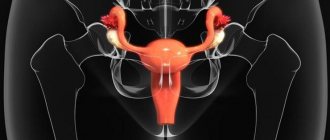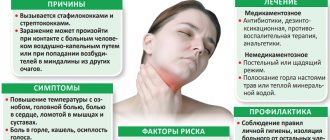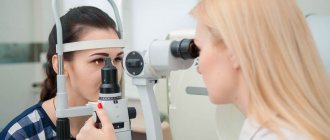Modern man is constantly exposed to stress and negative environmental influences. In such conditions, it is important and necessary to monitor your health and maintain the strength of the body. One of the indispensable ways to strengthen and maintain immunity is the Russian bath. Its regular visitors note an improvement in well-being, a surge of vigor and strength; it has been proven that regular visits achieve a hardening effect and increase resistance to harmful factors. But life is often unpredictable and it may happen that a person requires surgical intervention. For lovers of bath procedures, this is a real blow. Is it possible to go to the bathhouse after surgery? Or will you have to give up visiting the steam room forever? Let's try to understand this issue.
How long after surgery can I go to the bathhouse?
Fresh stitches in hot, humid air can come apart, causing bleeding.
Since surgical intervention always compromises the integrity of the tissue, it invariably ends with suturing. If a bath or sauna lover, without waiting for the doctor’s “go-ahead,” hurries to return to his usual leisure time, the bandage on the wound will become wet and healing will slow down.
Fresh stitches in hot, humid air can come apart, causing bleeding. If an infection gets into the incision, it can lead to sepsis. It happens that a person’s health suddenly deteriorates: shortness of breath occurs, blood pressure rises, and he may even lose consciousness. Special force majeure events such as displacement of implants or damage to the mesh installed during hernioplasty (in case of umbilical hernia) cannot be excluded.
In addition, any surgery is a real stress for the body. Anesthesia (especially general anesthesia), then taking medications, rehabilitation - this is not in vain for anyone. In general, even if the bandage has already been removed, the stitches are healing, and the patient feels well, there is no need to rush to the steam room.
How long should you wait?
It all depends on the type of surgical intervention and its complexity, on the speed with which the patient recovers. If, for example, you have an ingrown toenail removed, then after covering your finger properly with a bandage, you can go to the bathhouse the next day. But during serious operations, rushing is unacceptable - why risk your health?
Is it possible to play sports?
Between the left atrium and the ventricle is the mitral valve, the function of which is to allow blood to pass from the atrium. Overlapping with two valves (anterior and posterior), it prevents the return of blood flow, thereby ensuring its constant circulation through the vessels.
Prolapse is a valve malfunction that causes blood to return to the atrium.
This effect is caused by deflection of one or both valves, the degree of which determines the severity of the disease. When the body experiences increased physical activity, this provokes an increase in the amount of blood pumped into the atrium. So is it possible to play sports with stage 1 mitral valve prolapse?
The first degree is the mildest form of this disease. Most often, this pathology is congenital and is detected in children, mainly girls.
Admission to sports with grade 1 prolapse is determined as a result of an individual examination. Light exercise is recommended for all patients, as it helps keep the body in good shape. The possibility of more serious sports activities is allowed in the following situations:
- If the patient does not experience heart rhythm disturbances leading to loss of consciousness.
- In the absence of unstable rhythms or sudden disruptions in the functioning of the heart. These symptoms are determined based on electrocardiogram data.
- There is no valve insufficiency, which is determined by ultrasound with Doppler ultrasound.
- The patient had not previously suffered thromboembolism.
- There were no deaths in the family due to this disease.
Physical activity for mitral valve prolapse of moderate and high intensity is unacceptable if the patient has at least one of the above symptoms.
Bath after abdominal surgery
The body needs rehabilitation, so restrictions on visiting the bathhouse may persist for quite a long period.
Abdominal surgery, as a rule, involves general anesthesia, complex manipulation of internal organs, significant blood loss, and increased stress on the heart and blood vessels. Complications often occur after surgical interventions. To return to normal after such tests, the body needs time, so restrictions on visiting the bathhouse will remain in place for quite a long period.
According to statistics, almost 90% of abdominal surgery involves removing the appendix.
The wound must heal completely - with a cavity incision it is better to wait at least 3 months, after laparoscopic manipulation - 1.5-2 months. After appendicitis, complicated by peritonitis and inflammation of the peritoneum, rehabilitation will be required for up to six months.
Anyone who likes to take a steam bath will have to wait about six months after surgery on the stomach, intestines and liver.
A patient who has undergone cholecystectomy (removal of the gallbladder) in an open manner with a large incision may also require up to 6 months for complete recovery.
If you violate the deadlines, warns gastroenterologist Inna Lavrenko, then due to humidity and high temperature, the stitches may come apart right in the bathhouse, and treatment will take a long time. “You should completely avoid visiting the sauna for a while,” advises the doctor. “Dry heat is contraindicated due to its aggressive effect on the body; it is suitable only for healthy people.”
The doctor reminds: during this period, the usual active procedures are excluded, as well as the use of hard washcloths - you can only lightly massage yourself with a soft sponge. You are allowed to sit in the steam room until the first sweat.
If the operation was laparoscopic, that is, low-traumatic, then you can resume visits to the bathhouse after a couple of months.
Anyone who has undergone surgery on the heart and blood vessels will need to obtain permission from a doctor in order to go to the bathhouse. Is it possible for these patients to go to the bathhouse after surgery? Alas, those who have had coronary artery bypass surgery, have a stent placed in a vessel, or have a pacemaker installed will no longer be able to take a steam bath as before.
High temperature stimulates cardiac activity - for many people, spending 15-20 minutes in a steam room is enough for their heart rate to increase to 150 beats. In addition, the loss of fluid in the body increases the risk of thrombosis and recurrence of a heart attack. Gentle options are allowed - you can simply wash in the bathhouse, without entering the steam room and hot douches.
Possible consequences for the body
It is known that a bath stimulates the body's metabolic processes; the combination of a hot steam room and dousing with cool water increases the production of red blood cells, hemoglobin, etc. and so on, you can continue in this spirit for quite a long time. All this suggests that wound healing will occur faster.
However, not everything is so simple; the bathhouse stimulates not only the restorative functions of the body. If postoperative inflammation is not relieved, visiting the bathhouse will stimulate inflammation, thereby further intensifying it. Also, in the bathhouse, insufficiently tightened postoperative sutures can come apart, opening the door to infection.
The first thing you need to remember: you can’t go to the bathhouse if the inflammation is not relieved and the surgical wound is not healed enough.
Every person knows that a bathhouse is not just an opportunity to wash off dirt. This is a rather pleasant pastime in a warm wooden room filled with natural aromas. It is also a real storehouse of health, because exposure to high temperature and humidity has a beneficial effect on the functioning of almost all body systems.
Important! The bathhouse is useful only when the temperature regime is maintained and the person feels comfortable inside. If bath procedures cause discomfort (shortness of breath, weakness, dizziness), it is better to temporarily stop them and consult a doctor.
What happens to the body when a person enters the bathhouse? First, the body warms up slowly through the skin and lungs. As it warms up, the temperature of the blood and tissues increases, so the blood supply accelerates by about 3-4 times. The process of thermoregulation is gradually activated, substances that dilate skin vessels and stimulate sweating are released into the blood. Thanks to the sweat released, the body partially cools down.
At some time, the blood temperature reaches 38 degrees, and the internal organs begin to warm up. Sweating increases, and if fluid loss is not replenished, the salt balance will be disrupted and heat transfer will deteriorate. Stronger heating leads to fatigue and muscle weakness. There is a risk of heat stroke. The heart beats at a frequency of up to 185 beats per minute, which is dangerous for health and even life.
All people tolerate baths differently. For some, 10 minutes is enough to start feeling a racing heart and experiencing shortness of breath. And others can easily tolerate high temperatures and prolonged vaping.
What can happen to a person who disobeys the doctor and goes to the steam room ahead of schedule? Firstly, the seams may come apart. It is painful, unpleasant and dangerous, because it can cause bleeding and infection. And if the bathhouse is located outside the city, the problem of emergency transportation of the victim to the hospital arises.
Secondly, your health may worsen. Depending on the immune system, age and type of operation performed, this manifests itself in different ways: from shortness of breath and increased blood pressure to loss of consciousness and cardiac arrest.
Thirdly, specific force majeure events may occur. If it was an umbilical hernia hernioplasty with the installation of a mesh, the latter may lose its properties under the influence of high temperatures. And the hernia will easily burst again. If the patient has had implants inserted, they may move in the bath, ruining the aesthetic result. In a word, it is better not to take risks.
Bath after hemorrhoid surgery
Premature overheating after resection can cause bleeding and provoke an even greater inflammatory process.
Patients who have had hemorrhoids or polyps removed will need 2-2.5 months to recover. Since hemorrhoids are a disease associated with the functioning of blood vessels, a bath with its ability to accelerate blood circulation is contraindicated at this stage.
Premature overheating after resection can cause bleeding and provoke an even greater inflammatory process. And after swimming in a pool or jacuzzi, it is easy to “catch” an infection through an unhealed wound.
For avid bath attendants in the postoperative period, there are several rules.
- The first visit to the sauna after surgery should be short - get used to the steam room gradually
- Don’t worry alone, it’s better to call a reliable “assistant” with you
- Sit on the shelf not sitting, but lying down
- If you feel a deterioration in your health (shortness of breath, dizziness) - immediately leave the steam room
- Do not rub the skin around the wound with a washcloth or pour hot water on it
- To prevent thrombosis and dehydration, drink more fluids - mineral water, berry juice, warm herbal tea.
Fitness for intimate problems
In addition to morning exercises, you need to visit the gym several times a week.
In any case, he will set the following restrictions on the physical activity of his ward, thus adjusting her usual set of exercises:
| Prohibited exercises | Causes |
| Ban on gravity | The time of training with dumbbells for women with prolapse of the reproductive organ is irrevocably over. It is imperative to refrain from lifting and dragging objects that have significant weight. |
| Taboo on abdominal exercises | It is also not the time for a lady with uterine prolapse to restore a thin waist in this way. This may increase intra-abdominal pressure, which will lead to extremely negative consequences. |
| Ban on jumping and running | Such training exercises can be easily replaced with safe manipulations with your body. The best alternative in this matter would be walking or exercising on an orbit track. |
| Refusal of the platform leg press | There is no need to strain the uterus in such an aggressive way again. This woman’s reproductive organ is already in critical condition, so any fitness trainer would prohibit tempting fate in this way. |
Before visiting the gym, you should consult your doctor about unsafe types of exercise and permissible load. What for some will be considered a small burden, for others will be a critical point, due to which you can end up in the hospital.
Bath after spinal surgery
The rehabilitation period for such interventions can reach up to six months. After removal of an intervertebral disc herniation in the lumbar region, visiting the bathhouse is allowed after two months, but with restrictions.
Physiotherapist, chiropractor, rehabilitologist Leonid Ovcharenko recommends: “The warming up process itself should be short, 3 - 5 minutes. Then you can dive into the pool for 10 - 15 seconds. The main thing is to never overheat or overcool your lower back in the dressing room. 2 - 3 cycles in the steam room, then shower - and go home.”
But if, for example, you have undergone removal of a hernia of the cervical spine with the installation of an implant, then treatment and recovery will be longer. Doctors remind that the implant is a foreign body, and it is unknown how it will react to heat. It will take at least 6 months for the body to adapt to the implant.
Prohibited sports that require approval
Despite the absence of strict prohibitions for a number of patients, the disease remains at risk of loss of consciousness and fainting for the following sports disciplines:
- horseback riding;
- diving to a depth of more than a meter;
- motorcycling;
- long swimming, including synchronized swimming.
The following disciplines have a high level of safety from the point of view of cardiology:
- sprint;
- various types of martial arts;
- ball games (volleyball);
- ping pong and other active board games;
- various gymnastics options.
The above-described disciplines are not prohibited even for patients with second-degree prolapse, but before seriously engaging in any of these sports areas, it is necessary to consult with a specialist.
If the patient has a third degree of impairment, then sports may be prohibited until the course of the disease is completely stabilized. Even if the cardiologist makes certain loads acceptable, you must remember that you need to exercise in moderation. It is very important for the patient to monitor his or her health, following medical recommendations and contacting a specialist in case of any deterioration. This will prevent the progression of the disease.
Bath after eye surgery
After cataract surgery and lens replacement, you can go to a “non-hot” bath in a month, and take a steam bath in two.
Those who have undergone laser vision correction, says ophthalmologist Tatyana Iskusnova, should refrain from visiting the bathhouse and sauna, as well as swimming in open water, for one month.
Patients often ask which bath after surgery is better - dry or wet. Most doctors advise giving preference to a Russian bath, where the temperature is lower than in a sauna, so moist air is easier to tolerate.
- Limit your first entry into the steam room to 3-5 minutes; if everything turns out okay, make a few more entries
- Start steaming at a temperature of 50-60 degrees
- Sit on the bottom shelf first, and then gradually move higher
- After the steam room, you should not immediately douse yourself with cold water - instead, it is better to take air baths in the dressing room or rinse under the shower with water at room temperature.
Yoga for uterine prolapse
Even if certain physical exercises are prohibited for pelvic organ prolapse, this technique will not harm the woman. If you have a dilemma about what kind of sports you can do when your uterus prolapses, you should try the following yoga complex from famous masters of this art:
- Relaxation in a lying position. With this position of the body, you need to place your heels on the floor and take a deep breath. Then you should turn your head and legs in the opposite direction to each other. It is recommended not to breathe for 5 seconds.
- Exercise lying on your stomach. In the stated position, you should rest your forehead on the floor, while bringing your heels together. The position of the hands during this exercise should look like this: the thumbs are pressed to the palm, and the clenched fists themselves are located in the hip bone area. The further action while exhaling is to raise the legs as much as possible without bending them for the permissible time of holding the breath.
- Exercise in a sitting position. In this position, you need to spread your legs so that your buttocks are in close contact with the floor. Then you need to control your breathing according to the pattern “exhale – squeeze the muscles in the perineum – inhale – relax them.”
- Return to the lying position. You should raise your legs and squeeze your pelvic muscles to perform this exercise. When lowering the lower extremities smoothly, it does not hurt to continue such contractions for as long as possible.
Ideally, you should sign up for local practice centers so that at least in the first stages you can see how teachers act, so that you can then independently repeat their movements. After all, the result of the lessons also depends on how accurately they are reproduced.
Watch the video about uterine prolapse:
What if I had plastic surgery?
After plastic surgeries that do not affect vital organs (rhinoplasty, blepharoplasty, etc.), recovery requires 1-1.5 months. You can steam when the stitches have healed.
The operation to remove veins will require 1-2 months of rehabilitation; the surgeon who operated will determine the more precise timing.
If we are talking about surgery with the insertion of implants, breast or buttock, then you will have to take a break from the “bath life” for 4-6 months. Otherwise, there is a risk that the implant will move out of place - did you dream of such beauty?
Physical therapy for mitral valve prolapse
Light physical activity is very beneficial for patients with this disease. They are necessary to maintain good shape, and therefore are recommended by cardiologists.
By charging, the myocardium, valves and blood vessels are strengthened, as well as blood circulation is stimulated. Therefore, moderate amateur sports are prescribed to all patients suffering from prolapse.
Taking into account the degree of deflection of the valves and the level of backflow of blood into the atrium, doctors create an individual training program for each patient. The danger here is that with high loads on the body, strong pressure of the blood flow occurs on the valves. This may lead to atrial dysfunction.
With the right approach to physical activity, it is possible to strengthen the heart muscle and the vascular system as a whole. As a result, the degree of regurgitation decreases and normal cardiac function is gradually restored. If previously prolapse was classified as a heart defect, now this disease is considered reversible and is considered an age-related change that can be eliminated through proper therapy.
To restore normal heart function, the following types of sports disciplines are used:
- jogging at a moderate pace;
- bicycle rides;
- gymnastics.
It is very important not to work out in the gym to the point of exhaustion - just mild fatigue is enough to take a break and rest. The advantage of the above-described training is its complex effect on the body. In addition to good cardio exercises, they promote the functioning of joints and muscles, and also keep blood vessels in good shape.
To effectively restore the proper functioning of the cardiovascular system, strict medical supervision is necessary. The specialist must record all changes observed in the body’s functioning, in relation to which the further course of treatment will be determined.
Consequently, mitral valve prolapse is a fairly common cardiac disease, which involves some limitations in the patient’s physical activity. But to effectively combat the disease, a whole range of measures is needed, including moderate cardio exercises to stabilize the functioning of the heart valves. They are prescribed individually, taking into account the degree and nature of the disease, therefore, when treating prolapse, strict medical supervision is necessary.
Source: MirKardio.ru
The main thing is to approach it wisely
You need to independently think about the presence or absence of restrictions for visiting the bathhouse after undergoing surgery, or consult with a specialist, but the main thing is to approach the issue wisely.
You should not think that surgery is in itself a limitation for visiting the steam room, or that you can go to the steam room, regardless of what kind of surgery you had to undergo.
Think about your health, the balance between potential benefits and risks, and only then make your final decision. It is this approach, on the one hand, that will allow you not to limit yourself in your favorite vacation, but on the other hand, not to risk your health in vain.
Types of injuries and indications for bath procedures
A fracture is an injury that involves deformation of a bone. There are 2 types of fractures. If the fracture is accompanied by an open wound, then it is called open. When there are no external injuries, this is a closed fracture. With open fractures, not only the bone is damaged, but also the skin, muscle tissue, and blood vessels.
The most severe and dangerous fractures are displaced injuries, the process of treatment and recovery from which will take a long time. When bones are displaced, there is a risk of developing complications:
- bleeding (open and closed);
- decreased sensitivity;
- partial paralysis;
- disruption of the innervation of the limbs (connection of nerve endings with the central nervous system).
The bathhouse is indispensable in the treatment of musculoskeletal injuries. Fractures of the limbs are not the most dangerous cases; for such injuries, bath procedures are useful. A fracture associated with a dislocated joint complicates the situation, and the recovery period will be longer. Also, the duration of treatment differs in the case of a fracture of the sacrum or (this can occur when the pelvic bones are damaged).
A common type of injury is. In this case, blood and foam are released from the victim’s respiratory tract, suffocation occurs, and there is a danger of lung damage. And the most dangerous are spinal injuries - after this a person can suffer complete or partial paralysis.
For all types of fractures, bath procedures are indicated. After all, even with the most complex injuries, a bath promotes the rapid formation of callus at the site of fractures and cracks, and hot air has a healing effect when stretching injured muscles, tendons and ligaments.
Recovery is accelerated:
- impaired blood supply to muscle tissue causes hypoxia, and intense heating of the body stimulates blood flow;
- massage treatments using a broom and inhaling hot air improve regenerative processes;
- due to blood flow to the affected area, pain is reduced, restoration of cartilage and bone tissue is accelerated;
- endorphins (hormones of happiness) are released;
- tone and mood increase.
Pouring cool water - even tomorrow!
Unlike thermal procedures, dousing with cool water can be done even on the second day after cesarean section. Gynecologists recommend dousing, since a full shower can be taken 3-5 days after birth, and a bath - no earlier than 6-8 weeks after the operation. It is recommended to start with warm water and gradually move to cool water. The seam must be covered with a special bandage, where water ingress is contraindicated. Such elements of hardening will help restore tone and, importantly, recharge with energy (especially in the morning and after, as a rule, sensitive, intermittent maternal sleep).
Precautions are important
You should not neglect the advice of gynecologists and family doctors, because unauthorized visits to the steam room in the first 2-3 months after a caesarean section can lead to increased adhesive pain and the occurrence of adhesions. There is a high risk of the appearance of purulent foci and fistulous wounds. If the surgical wound is not closed, infection can lead to severe bleeding.
Sports after cesarean section - at least one month later
Many women practice combining baths and sports. Gynecologists are unanimous in their opinion: it is recommended to resume physical activity 4-8 weeks after the birth of the baby. It all depends on the general health and physical fitness of the woman. The load should increase gradually, without intensive pumping of the press. Running, aerobics, exercises with dumbbells and body bars are not recommended. It is best to start with Pilates, bodyflex, general strengthening exercises for 30-40 minutes maximum. If possible, it is recommended to “return to sports” with the help of a personal trainer.










